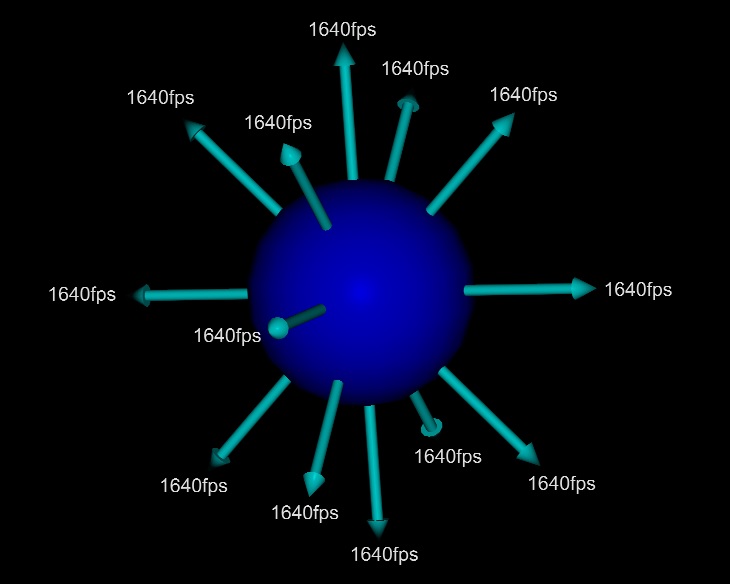
I got involved in modern airguns around the year 2011. Way before that time, there seemed to be almost a consensus that there was a limit to how fast a pre-charge pneumatic (PCP) airgun could shoot a projectile.
Origins of the 1640fps myth:
At 70F, air has a molecular velocity of 1640fps. Freely expanding air will not exceed 1640fps. A ball of compressed
gas would “explode” outward in all directions, at 1640fps, when there is no resistence:

I believe that, as it is, to be true as do many others. Some individuals proposed that same limit also applied to PCP airguns. That was around the year 2002 as best as I can tell. It was often repeated and the myth was born. I accepted the PCP limit theory at the time without thinking too much of it.
The “Myth” busters:
Occasionaly, an individual would report about a 1700 or 1800fps shot, which was usually dismissed as erroneous data
or maybe it was influenced by outside factors. Because 1700 or 1800fps was thought to be impossible after-all. There
were on-going discussions on the GTA forum by a few knowledgeable forum members who were not so sure about that 1640fps
limit. Lloyd Sikes led an investigation by creating a spreadsheet to predict the velocities of certain PCP configurations.
It was based on f=ma and included the pellet mass as well as the ever increasing air mass. He setup a controlled experiment using
parameters from the spreadsheet that gave a predication of over 1640fps. It crossed the chronograph
at 1745fps. Though maybe not as fast as predicted, it was consierably over the mythical 1640fps. I was one of the first to raise a
red flag that this was not possible. But the experiments look valid. So I setup own spreadsheet that used numerical integration
to model the process. Lloyd and Bob Sterne were using a time based integration. I was using a distance based integration,
but our results were close. After some prodding by a few of us, Lloyd reconfigured the test bed with a longer barrel in order
to push the envelope. He followed on with several more shots in the 2100fps range.
The investigating team contemplated why the 1640fps limit did not apply to PCP airguns. The light went off in my head after discussions on the fudge factors and fluid friction in the spreadsheets. AHA! - the losses that we were trying to include don't disappear. They are still in the system as heat gain.
I tried to develop the necessary equations to model the process. It got complicated fast. I may still continue to look into it but it won't help explain to most, since the math looks like gibberish unless you stay right on top of it. I believe that a “a picture is worth a thousand words”. So I decided to create a short pictorial to walk through the reasons why the molecular velocity of compressed 70F air is not a velocity limit for airguns.
If you buy into the 1640fps limit theory, the 1640fps might be viewed as a barrier. Depicted here as a wall of bricks moving away at 1640fps, that cannot be passed by the air mass:
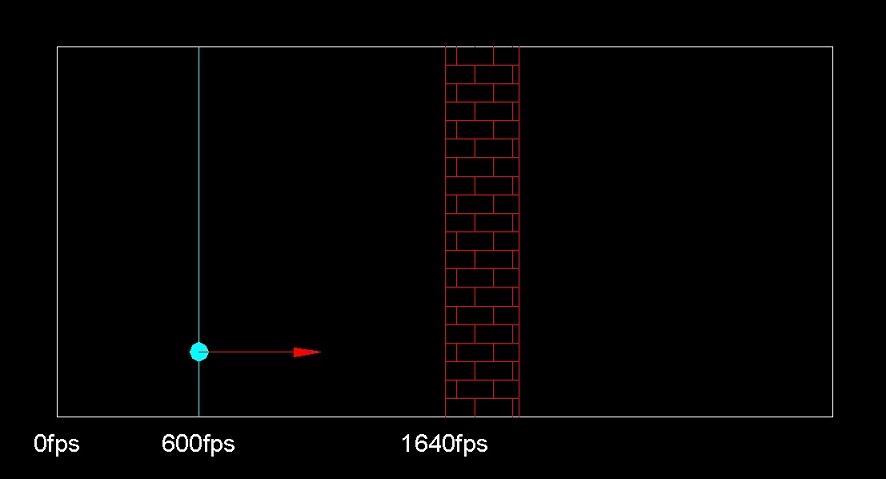
Looking into it, in more detail:
There is a lot more to it than that. And when forced to consider those details, the original theory falls apart.
That 1640fps is really an RMS velocity which looks more like this:
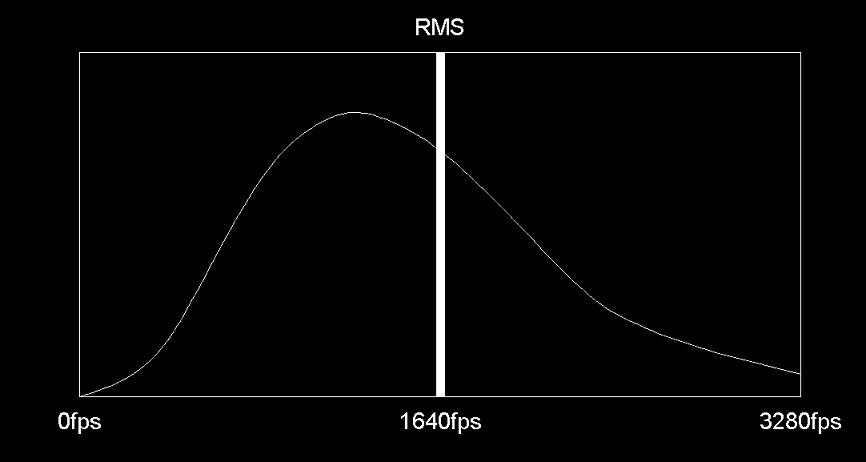
Even at low velocities, the "ramp" of the RMS barrier is starting to hamper the acceleration of the air mass. The hatched area (yellow), can be viewed as resistance or friction of the air along the boundary layer, next to the barrel wall. It has little affect at very low air speeds. But as the speed gets farther up the "ramp", so does the resistance:
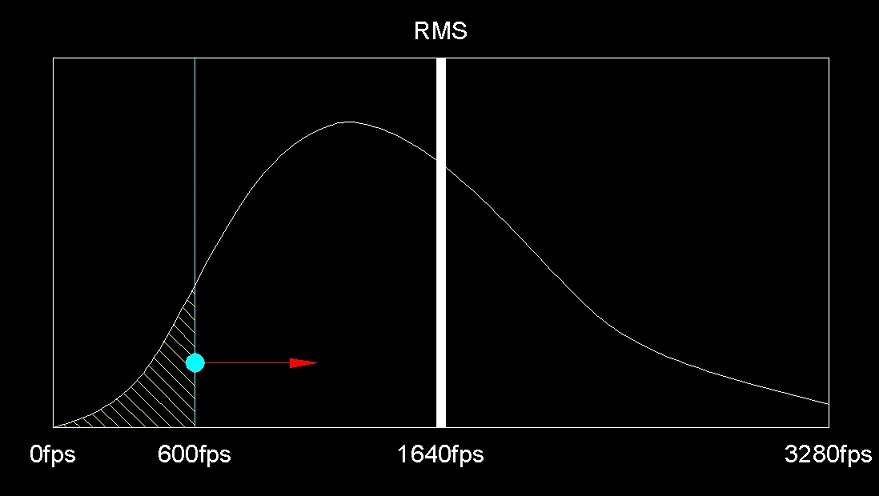
As the velocity of the air mass approaches the RMS velocity, the “drag” increases.
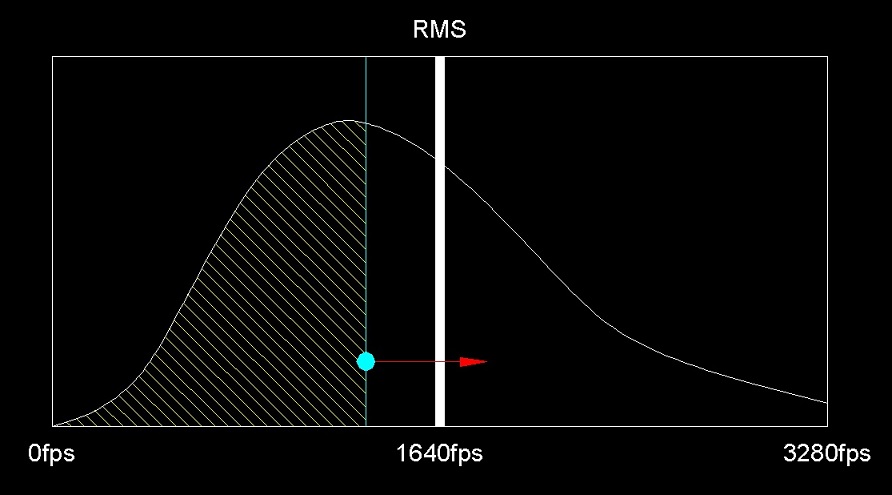
That resistance reduces the efficiency. And ends up as heat gain. The energy is not lost (1st law of thermodynamics), but it does end up in a form that cannot be utilized to perform work within the process. There is an increase in entropy of the isolated system (2nd law of thermodynamics).
The energy serves to raise the temperature of the air, thereby raising the molecular velocity of the air itself. Whenever the air encounters friction, the “barrier” (molecular velocity) stretches forward a little bit. It is an incremental process. But the effect, is that most of the “barrier” stays ahead of the air.
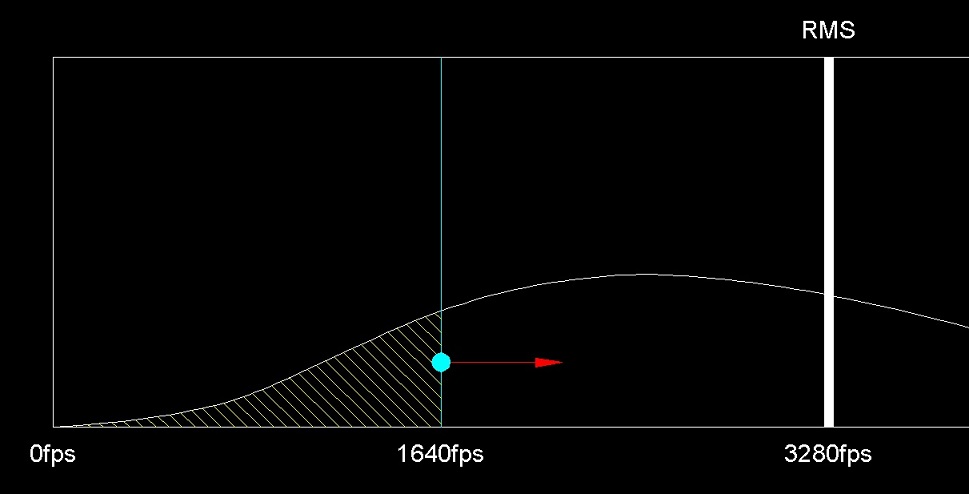
How fast?:
I still ask, “What is the actual velocity limit?” I can't answer that at this time, but my best guess is that it is at
least twice the original RMS molecular velocity of the propelling air. So, is 3280fps possible? I'll leave it at that
for now, as it gets too complicated to try and include in this brief paper. Lloyd is likely to continue to push the
envelope, and with more data, we can maybe develop the best of several new theories as to maximum velocity.
BTW: For practical purposes, I like to keep my airgun velocities in the 900fps region, or even lower if I am power limited.
Scott Hull